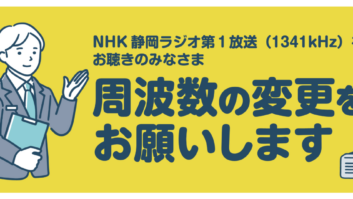Transmission lines
Jan 1, 2009 12:00 PM, By John Battison, P.E., technical editor, RF
A transmission line is a far more complex piece of equipment than many people realize. In its simplest form it may be considered as just a pair of wires merely carrying ac power. Usually in these cases the important characteristics are resistance, load-carrying capacity and insulation. With, quite possibly, I2R losses being among the most important. But as increase the frequency to RF voltages, some new characteristics appear which have far-reaching influences. As the wavelength of the ac signal increases so do the effects of impedance and other transmission line characteristics.
A frequently overlooked fact is that transmission lines can perform impedance transformations in the same way as tee and pi networks, although they take up more space and are not always as easy to calculate. The length of a transmission line where an appreciable current flows through an appreciable portion of a wavelength is involved can result in either low or high output voltages appearing at the end of the line. Obviously, the higher the frequency the greater the possibility of transmission line influence upon the signal.
Lumped or distributed
In the case of a typical network using lumped constants, the space occupied is usually small and it is possible to calculate quite precisely the actual effect on the signal. However, the transmission line, which usually consists of distributed constants, may be more difficult to tune precisely because of the need to adjust the transmission line length to produce the desired characteristics. One way of looking at this is to compare the characteristics of component networks with those of transmission line using distributed networks.
A component network is composed of individual inductances and capacitances whose values are known precisely, i.e. �lumped� values. The same characteristics that apply it to a transmission line are line characteristics that are often somewhat variable depending on the physical configuration of the transmission line.
A transmission line that consists of a pair of parallel wires can be considered as a form of going-and-coming circuit. It follows from this that we can think of them as a one-turn coil. We can also think of them as being long thin plates as in a capacitor, because the two wires have different potentials. There is often leakage between the wires because of imperfect insulation. There also may be resistance losses due to thin conductors.
There are various ways to calculate the impedance of paired lines, but most radio engineers are concerned with coaxial cables, which are far simpler to use and are not subject to spacing changes between the conductors as the transmission line moves.
Open wire transmission lines consist of two or more conductors between the transmitter and the antenna. Early types of coaxial transmission line used a single center conductor surrounded by a number of equally spaced outer conductors. Designed to provide more-or-less uniform impedance and carry high power, several variations were developed. I was involved with the construction of a 1MW medium-wave transmitter in Lebanon where the high-power transmission line consisted of a 2� rigid copper center conductor surrounded by 10 or 12 equally spaced smaller rigid conductors. The line had an impedance of around 280 ohms and a fairly substantial current developed.
Balanced and unbalanced lines

Figure 1. The electrical equivalent of a balanced transmission line. A unit is contained in the dotted section.
Click image to enlarge.
Most of the antennas used for medium frequency broadcast transmission utilize unbalanced transmission lines. Figure 1 shows the conventional theoretical presentation of a balanced transmission line and as its name implies both sides are similar. Current transmission line theory considers a line to consist of an infinite number of combinations of inductance, capacitance and resistance.
Figure 2 shows the conventional illustration of an unbalanced transmission line, and as might be expected one side is grounded, and offers very different characteristics from the �hot� side.

Figure 2. An unbalanced transmission line basically consists of a hot conductor containing resistance and inductance with distributed capacity between it and the ground side.
Click image to enlarge.
A logical development of the unbalanced line with its grounded side is a form of shielded line in which a center conductor credited with specific non-lumped constants is contained within a solid metallic tube. It is essential that the spacing between the inner and outer conductor remains constant. If this is not maintained, the random changes in spacing will produce impedance discontinuities that can result in reflections and sometimes hotspots. Bulges in the outer conductor, or other mechanical imperfections such as bullets at points in the center conductor where rigid lines sections are joined can also result in discontinuities, which can lead to line failure.
Coaxial transmission lines
Provided that heat and cold expansion and contraction of lines is properly compensated, coaxial transmission lines tend to be more weatherproof than other unbalanced lines. The development of coaxial lines seems to have them spurred by the development of FM and television transmitters with their higher power and higher frequencies.
Dry air or an inert gas is normally used in rigid coaxial cable installations, while the dielectric in flexible cables is usually made of a solid-state dielectric either completely filling the space between the inner and outer conductors or in the form of a spiral dielectric or insulating spacers designed to maintain constant spacing between the inner and outer conductors. The dielectric medium has an effect on the propagation characteristic of the coaxial cable. Fortunately, the various coaxial cable manufacturers provide comprehensive technical data and coaxial cables selection today is relatively easy. Flexible coaxial cable is usually available in convenient cable lengths.
Rigid copper transmission lines are generally not used for AM radio transmitters. The advent of flexible coaxial cable in larger sizes and greater ease of handling has made it very popular, and it is somewhat easier to handle than rigid copper line.
E-mail Battison at[email protected].







